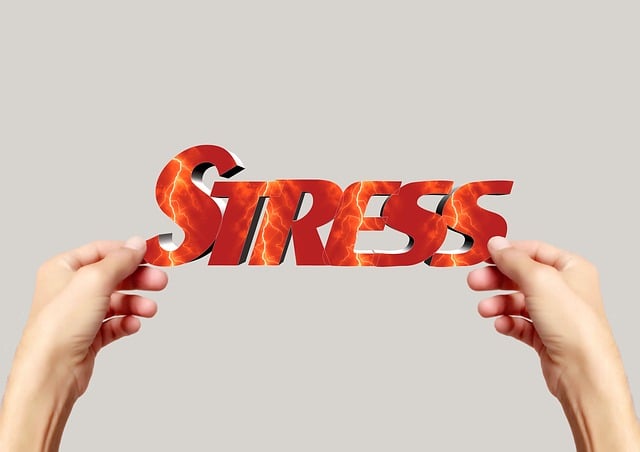Stress can significantly impact our well-being, but behavioral stress intervention offers a powerful tool for managing it. This comprehensive guide explores effective strategies to combat stress through a holistic approach. We delve into understanding the intricacies of behavioral interventions, identifying personal triggers, and mastering techniques for instant stress relief. Discover the numerous benefits of integrating these practices into your life, from improved mental health to enhanced productivity. Real-world success stories will inspire you to embark on your journey towards a calmer mind.
Understanding Behavioral Stress Intervention

Behavioral stress intervention, often referred to as stress relief therapy, is a powerful approach aimed at empowering individuals to manage and overcome stress-related challenges. This therapeutic method recognizes that our behaviors play a significant role in how we perceive and respond to stressful situations. By identifying and modifying unhealthy behavioral patterns, one can gain better control over their emotional well-being.
The core principle behind this intervention lies in teaching individuals effective coping strategies and promoting positive behavioral changes. It involves various techniques such as cognitive-behavioral therapy (CBT), mindfulness practices, and relaxation exercises. Through these methods, individuals learn to challenge negative thought patterns, replace them with more adaptive ones, and develop a stronger sense of emotional resilience. This tailored approach ensures that stress relief becomes an accessible reality for those seeking to navigate life’s challenges with greater ease.
Identifying Triggers and Stressors

Identifying triggers is a crucial step in behavioral stress intervention and stress relief therapy. Individuals often experience stress due to various stimuli or situations, which can vary greatly from person to person. These triggers could be related to work, relationships, financial matters, health concerns, or even everyday routines. By keeping a journal and reflecting on patterns, individuals can start to recognize what specifically sets off their stress response. For example, some people might find that certain tasks at work consistently cause anxiety, while others may have specific environmental cues, like loud noises or crowded spaces, that trigger stress reactions. Understanding these triggers is the first step towards managing and reducing stress effectively.
Once identified, it becomes easier to develop strategies to avoid or cope with these stressors. This might involve setting boundaries, changing one’s environment, or adopting relaxation techniques. For instance, if a busy commute is a significant source of stress, considering alternative transportation methods or adjusting work hours could help alleviate the pressure. Stress relief therapy often guides individuals through this process, providing tools and insights to navigate and reduce the impact of stressors on their daily lives.
Techniques for Effective Stress Relief Therapy

Stress relief therapy involves a range of techniques designed to help individuals manage and reduce their stress levels effectively. One powerful method is mindfulness meditation, which encourages people to focus on the present moment, cultivating awareness and acceptance of thoughts and feelings. This practice has been shown to lower stress hormones and enhance emotional regulation. Additionally, cognitive-behavioral therapy (CBT) plays a pivotal role in stress relief by helping clients identify and challenge negative thought patterns, replacing them with more positive and realistic ones. CBT also teaches valuable coping strategies, such as problem-solving skills and relaxation techniques, enabling individuals to confront stressors head-on.
Another effective approach is engaging in regular physical activity, which acts as a natural stress reliever. Exercise stimulates the release of endorphins, often referred to as ‘feel-good’ hormones, that can boost mood and reduce tension. Moreover, participating in hobbies or social activities can provide much-needed breaks from stressful situations, fostering a sense of joy and connection. Incorporating these diverse techniques into one’s routine allows for comprehensive stress relief therapy, promoting overall well-being and resilience.
Benefits of Incorporating Behavioral Strategies

Incorporating behavioral strategies into stress relief therapy offers a multitude of benefits. These techniques empower individuals to actively manage their stress levels by modifying behaviors and thinking patterns, leading to improved mental well-being. Through structured interventions, such as cognitive-behavioral therapy (CBT), individuals learn to identify and change negative thought cycles and maladaptive behaviors that contribute to chronic stress.
By adopting these strategies, people can enhance their ability to cope with stressful situations effectively, increase resilience, and promote overall life balance. Behavioral stress intervention provides practical tools for self-regulation, enabling individuals to make positive changes in their daily routines, improve relationships, and boost productivity while reducing the negative impact of stress on both physical and mental health.
Real-World Applications and Success Stories

In real-world settings, behavioral stress interventions have proven highly effective in various contexts. These evidence-based therapies cater to diverse populations, from workplace employees suffering from chronic job-related stress to individuals dealing with traumatic events. One successful application has been in corporate wellness programs, where tailored stress relief therapy sessions significantly reduced burnout and improved overall employee satisfaction and productivity.
Additionally, behavioral interventions have shown promise in healthcare settings, aiding patients in managing pain and anxiety associated with illnesses. Success stories include personalized relaxation techniques and cognitive-behavioral therapies that have led to better patient outcomes and enhanced quality of life. These real-world examples underscore the versatility and effectiveness of behavioral stress intervention approaches in enhancing mental well-being across different demographics.
Integrating Relaxation Practices into Daily Life

Integrating relaxation practices into daily life is a powerful way to combat behavioral stress and enhance overall well-being. In today’s fast-paced world, where stress has become an ubiquitous companion, adopting simple yet effective techniques can make a significant difference. Mindfulness meditation, deep breathing exercises, and progressive muscle relaxation are evidence-based methods that can be easily incorporated into daily routines. These practices help individuals disconnect from stressful thoughts, promote a sense of calm, and improve emotional regulation.
By dedicating just a few minutes each day to these activities, one can experience a profound shift in their stress response. Stress relief therapy isn’t about escaping reality but rather creating a mental space that fosters resilience and balance. It empowers individuals to navigate life’s challenges with greater clarity and composure, ultimately leading to improved mental health and a more fulfilling lifestyle.
